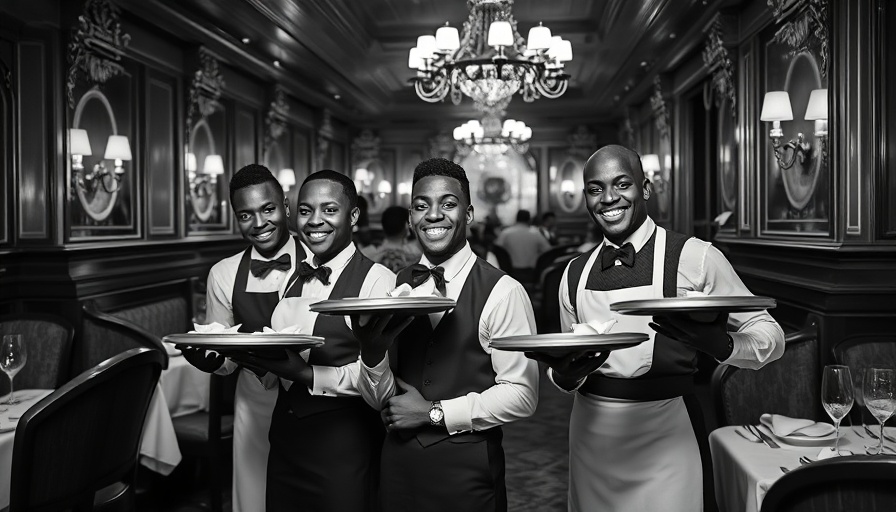
Rediscovering Harlem: The Heart of the Jazz Age
The 1920s marked an extraordinary time for Harlem, a neighborhood that pulsated with cultural vibrancy and artistic innovation. Often referred to as the Harlem Renaissance, this era stood as a significant milestone in African American history, spotlighting the profound contributions of Black artists, writers, and musicians. Central to this cultural upheaval were venues along Lenox Avenue, famously known as "Swing Street," where the sounds of jazz filled the air and the spirit of artistic expression thrived.
The Rise of the Harlem Renaissance
The Harlem Renaissance emerged against the backdrop of the Great Migration, a period when a wave of African Americans moved from the rural South to urban centers in the North. As detailed in historical accounts, including the work of W.E.B. Du Bois and Alain Locke, this cultural movement was not simply about artistic expression; it heralded a new sense of identity and pride for Black Americans. As Locke articulated in his seminal essay “The New Negro,” this movement represented a reclamation of Black identity outside of the stereotypes imposed by a predominantly white society.
A Cultural Melting Pot Like No Other
Despite its flourishing, this vibrant environment bore contradictions. While nightclubs like the Cotton Club attracted diverse crowds, they simultaneously excluded the very residents who brought life to Harlem. White patrons eager to experience Black culture often did so from a distance, raising questions about cultural appreciation versus appropriation. This paradox came to define the Harlem Renaissance—a celebration mixed with a struggle for equality and representation.
The Musical Evolution: Birth of Jazz Icons
Without question, the musical landscape during this period was revolutionary. Renowned figures like Duke Ellington and Bessie Smith transformed the face of American music as they performed at legendary venues such as the Savoy Ballroom. Harlem's nightlife created a tapestry of sound that resonated not just within the community but broadly across America, influencing genres and artists across the globe. Jazz became more than music; it was an anthem for liberation and social change.
Literary Achievements and Lasting Impact
The literary scene flourished alongside its musical counterpart. Writers like Langston Hughes and Zora Neale Hurston offered profound insights into the Black experience through their works that tackled identity, struggle, and triumph. As organizations such as the NAACP published influential literary magazines, they provided a platform for Black writers to reach broader audiences, giving voice to the complexities of Black life in America.
Beyond Harlem: Expanding Influence and Legacy
Although centered in Harlem, the influence of this cultural renaissance reached far beyond its geographical boundaries. The ideas, literature, and music created during this time laid foundational stones for future civil rights movements and reshaped American culture. It empowered subsequent generations to embrace their identity, fostered community pride, and established Harlem as a symbol of hope and creativity in the collective American narrative.
As we reflect on the Harlem Renaissance, we recognize that this period didn't just celebrate Black culture; it profoundly changed the way America views race and art, highlighting the ongoing journey toward equality and the rich cultural tapestry that defines our nation.
 Add Row
Add Row  Add
Add 




Write A Comment